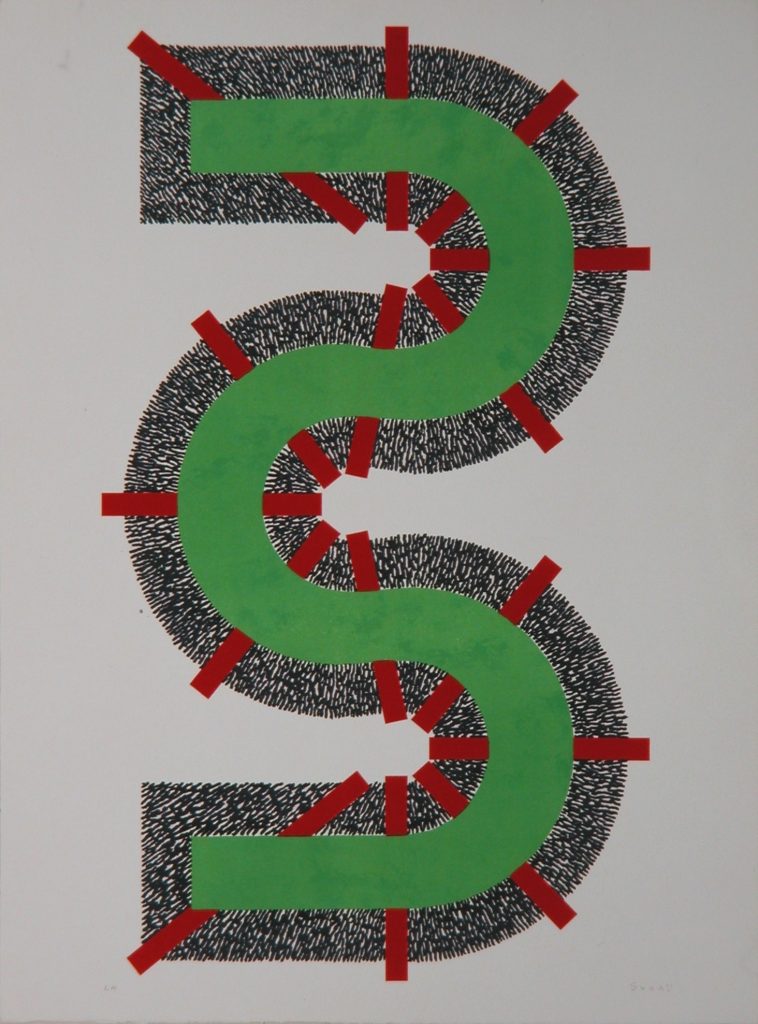Exhibitions
-Celebrating the 100th anniversary of his birth- Kumi Sugai -the eternal challenger
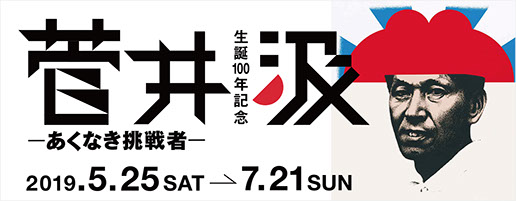
The Umi-Mori Art Museum commemorates the centennial of the birth of Kumi Sugai (1919-1996) with the special exhibition Kumi Sugai- the eternal challenger-Celebrating the 100th anniversary of his birth which features our collection of about 100 prints by Sugai.
Sugai was born in Kobe city and studied at the Osaka School of the Fine Arts. After working as a commercial artist for the railway operator Hankyu Corporation, he relocated to France on his own in 1952. The Galerie Craven held a solo exhibition of Sugai’s works soon after he relocated to France which attracted much interest and he quickly gained popularity as an artist. Subsequently Sugai based himself in Paris and built a successful artistic career, receiving several awards in international exhibitions including the 31st Venice Biennale in 1962.
Sugai is well known for his large oil and acrylic works of about 2 meters in size which used vivid colors and geometric forms. When Sugai found a certain shape he liked, he continued to feature it in successive works. But he also changed the style of his art numerous times through a desire to “create a new art”, revealing a side of him which always continued to seek new ways of expression.
Sugai also began to engage in print-making in 1955 after being encouraged to do so by the gallery. Prints were ideally suited to accommodate Sugai’s preoccupation with repeating the same patterns and were easier to create than paintings; during his career he created more than 400 prints.
The museum’s collection of about 100 prints by Sugai range from the period when he began to engage in print-making in 1955 up to 1995, the year before he died. The exhibition provides a comprehensive view of his prints which are grouped into four stages. We invite you to experience and enjoy the vivid colors and diverse development of shapes in Sugai’s art.
Lastly, we would like to express our heartfelt gratitude to all individuals and organizations who provided much support and cooperation to make the exhibition a success.
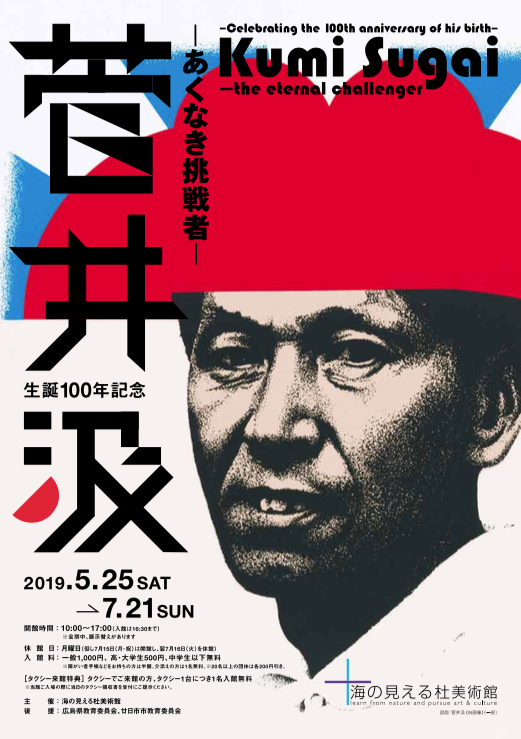
General Information
Hours: 10:00-17:00 (Last entry: 16:30)
Closed: Monday (except July 15th), and July 16th
Admission: General admission: 1,000 yen, High school/university students: 500 yen, Junior high school students and younger: Free
*Admission is half price for people with disability certificates, etc. One accompany person is admitted free of charge.
*Groups of 20 or over will receive a discount of 200 yen per person.
Venue: Umi-Mori Art Museum (10701 Kamegaoka, Ohno, Hatsukaichi, Hiroshima)
With the support of: Hiroshima Board of Education and Hatsukaichi City Board of Education
Chapter 1: Oriental Motifs and Hieroglyph
In 1952, Sugai left Japan and settled in Paris on his own to become involved in the international art world. For Sugai, unable to speak French and without any acquaintances, this was a great challenge fraught with risk. Yet when he held his first solo exhibition in 1954 after signing a contract with the Galerie Craven in Paris, he immediately attracted much interest. On the advice of the gallery, he tried his hand at lithographs for the first time in the following year. This became the starting point of Sugai’s printmaking career.
From the time of his relocation to France up to the early 1960s, Sugai created works with bold and dynamic shapes reminiscent of calligraphic characters. He often used motifs taken from Japanese culture, such as the Oni (demon), and Samurai (warrior), along with subjects taken from nature such as the wind. His works which featured Oriental motifs rendered with a delicate touch were rated highly in the Parisian art world.
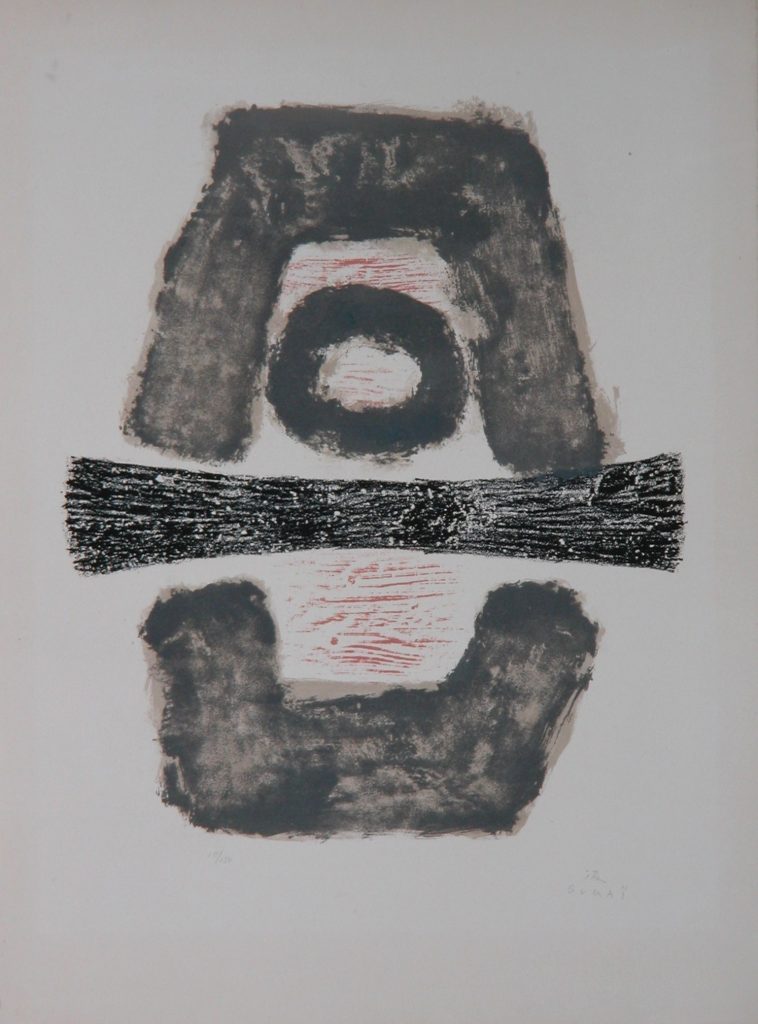
Chapter 2: Pursuit of Bold Abstract Expressions
Sugai achieved success as an artist and received awards in international exhibitions but evinced a change in his artistic style from about 1963. From the representations of forms resembling calligraphic characters he began to create dynamic abstract expressions featuring bright colors including red, blue and green in geometric shapes such as circles and squares.
It was in this period that he purchased a Porsche and delighted in driving the car on the highways. He enjoyed the thrill he felt in driving the Porsche at dangerously high speeds and it influenced his art. The images which came up in his mind as he sped down the highways were also reflected in his works.
From this period he began to repeatedly use certain motifs which were to his liking, thus establishing his own unique style in which he repeated the same shapes in successive works, varying the way he arranged and superimposed them.
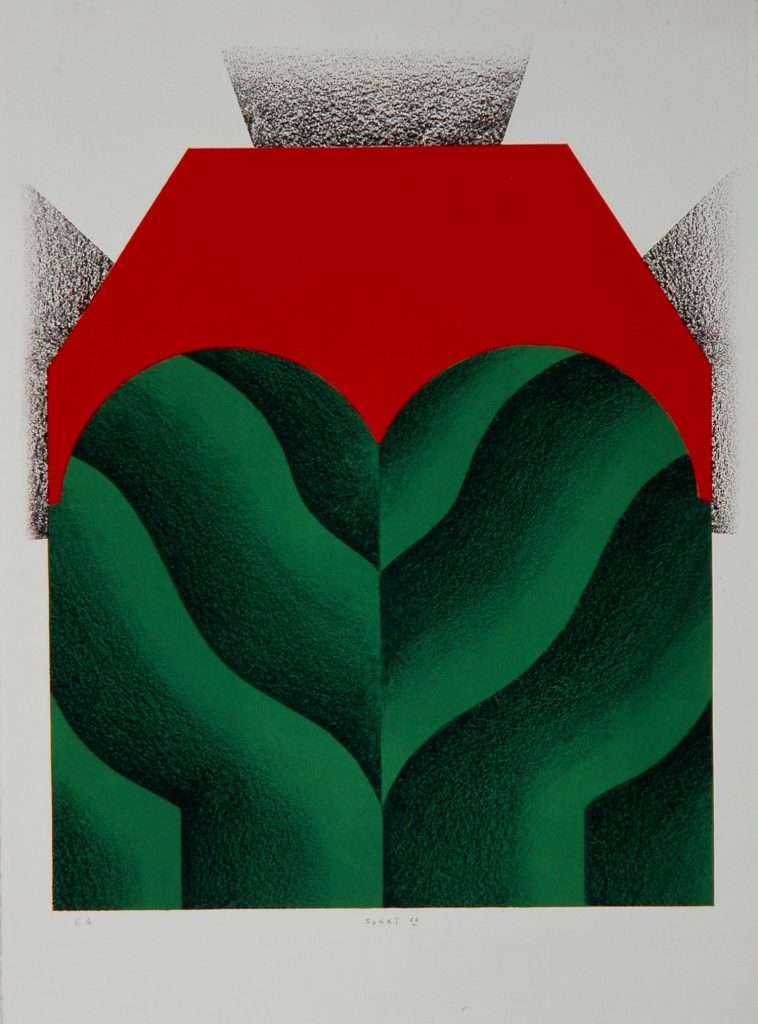
Chapter 3: Repetition of Colors and Signs
In the 1970s Sugai began to try to thoroughly eliminate all unnecessary forms from his works. The components in his artworks became more restrictive, developing a geometric style composed almost entirely of circles and straight lines evoking traffic signs. He created many variations of the same motif by combining them in different ways and repeating them.
Furthermore, the practice of eliminating all non-essential elements was not limited to his art. He also applied this philosophy in everyday life as well; it is well-known that he ate the same foods every day for his meals for more than 20 years so that he could concentrate on his work and not have to think about matters of lesser importance.
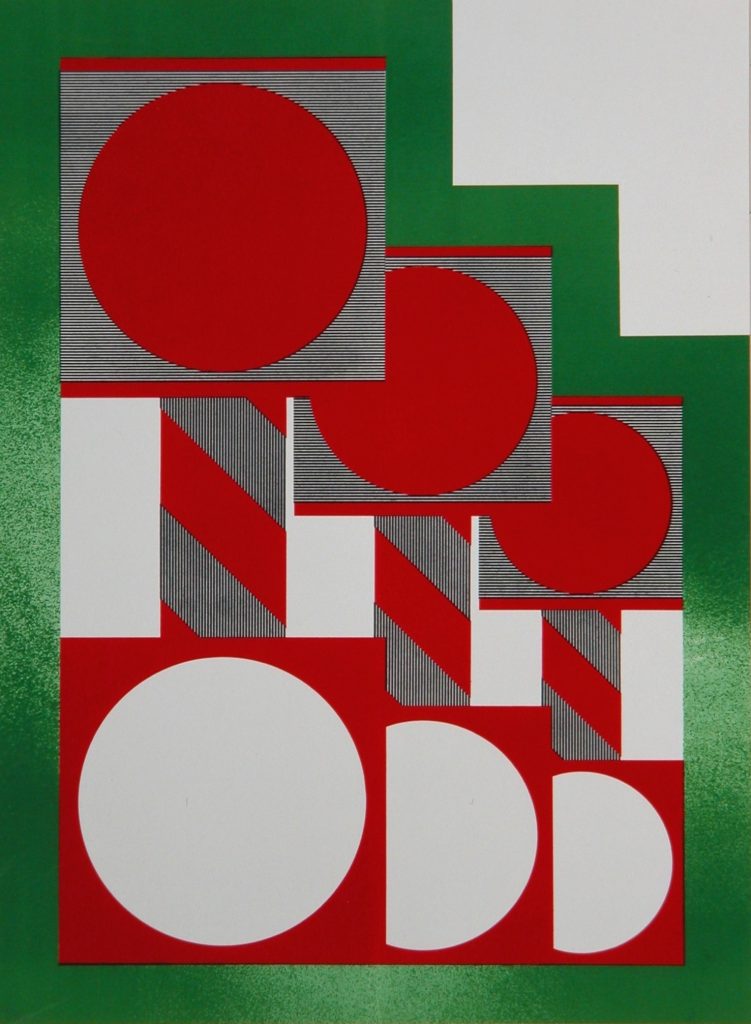
Chapter 4: Discovering His Originality in the Letter S
From the late 1980s to his final years, Sugai developed a preoccupation with one particular shape which he continued to portray repeatedly. This is his “S” series of works. The letter S was the initial of his name and also represented the curves of the highways that Sugai liked to drive. Using the letter S as a motif he created many works and experimented with many variations by changing their colors, shapes, inverting them, and combining them with other motifs such as arrows.
As he continued in his career, he had wondered why it was considered unacceptable to repeat the same scene in his successive works and found his originality in the act of repeatedly creating artworks featuring the same pattern.
